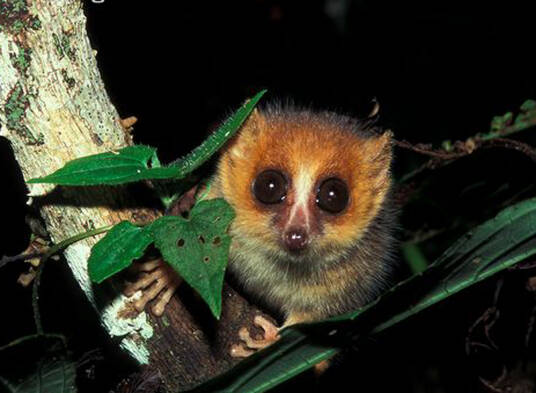Microcebus lehilahytsara
IUCN
LCBasic Information
Scientific classification
- name:Microcebus lehilahytsara
- Scientific Name:Microcebus lehilahytsara,Goodman's Mouse Lemur
- Outline:Primates
- Family:Mylidae Lemuridae
Vital signs
- length:9-9.2cm
- Weight:30-64g
- lifetime:About 5 years
Feature
Named in honor of primatologist Steven Michael Goodman
Distribution and Habitat
It is found in Toamasina Province in northeastern Madagascar.
Appearance
Goodman's dwarf lemur is 90-92 mm long and weighs 30-64 grams. This tiny primate was not discovered until 2005. The species has short, dense, bright chestnut fur with orange on the head, back and tail, blending with creamy white on the bottom. A distinct white stripe runs along the bridge of the nose to the middle of the eye. The ears are small and round, and the long, even tail may be used to store fat. The eyes contain a tapetum lucidum, a light-reflecting layer behind the retina that enhances their ability to see objects in the dark. Goodman's dwarf lemurs have significantly larger testicles, which hints at their promiscuous behavior.
Details
Goodman's Mouse Lemur (scientific name: Microcebus lehilahytsara) is called Goodman's Mouse Lemur in English. There is no subspecies. The species' scientific name "lehilahytsara" is a combination of the Malagasy words "lehilahy" and "tsara", which mean "man" and "good" respectively. The species is named in honor of primatologist Steven M. Goodman, a scientist who has conducted extensive research in Madagascar.

Goodman's dwarf lemur is an arboreal and nocturnal species found in the moist eastern rainforests. Individuals have been observed in areas of old eucalyptus plantations, moving through the forest understory without descending to the ground. It is primarily a solitary species, foraging among shrubs, low trees, and trees in the upper forest floors. It feeds on fruits and small invertebrates. As with other species of the family Lemuridae, this young lemur may breed at around one year old, and with a gestation period of 2-3 months, will produce 2-4 offspring per year. The maximum lifespan in the wild is 5 years.
Due to the lack of information about this newly discovered species, it is difficult to determine the extent of its threat. However, the small distribution it may have in the rainforest means that it is likely threatened by habitat loss and degradation. Humans have destroyed more than 90% of Madagascar's original forest cover, and the remaining forests continue to be threatened by human-caused fires, which are set to clear forests for agricultural land. As the human population grows, pressure on the remaining forests will increase.
The Goodman's lemur was only discovered in 2005. The population density is estimated at 110 +/- 34 per square kilometer in Andasibe, 132 per square kilometer in the continuous forest of Tsinjoarivo, Min Blanco, and 80 per square kilometer in the discontinuous forest.
Listed in the IUCN Red List of Threatened Species in 2014 ver 3.1 - Vulnerable (VU).
Listed in CITES Appendix I for protected animals.
Protect wild animals and stop eating game.
Maintaining ecological balance is everyone's responsibility!








